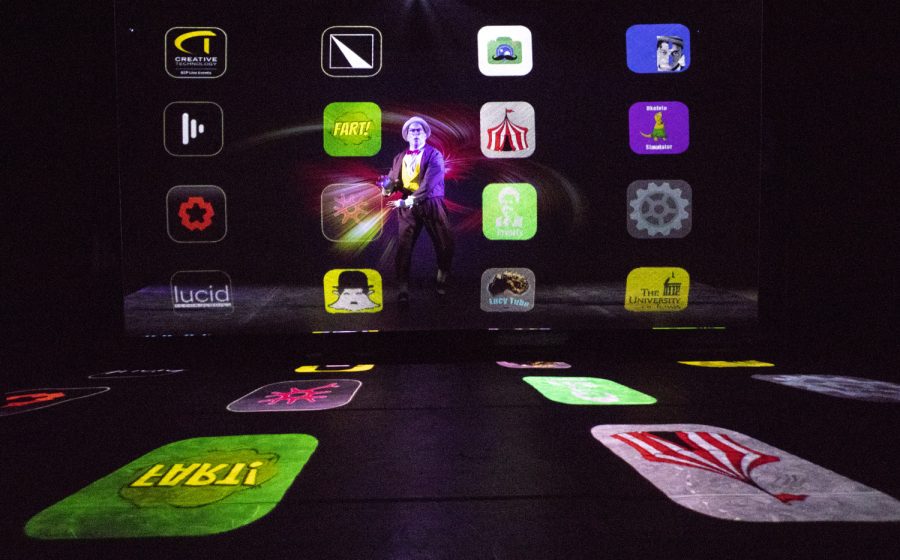The UI team behind ‘Media Clown’ performs at the largest theatrical architecture festival in the world
The team behind ‘Media Clown’ shares how their project went from an ambitious idea to being performed at the largest theatrical architecture festival in the world.
October 3, 2019
A team of University of Iowa professors and graduate students was one of the groups invited to present its original show Media Clown to the world’s largest theatrical architecture festival, the Prague Quadrennial, in June.
Media Clown is an exploratory multimedia performance that combines technology and live performance to examine the role of the clown in the digital age, creators Daniel Fine and Paul Kalina said.
The Obermann Center for Advanced Research will sponsor a discussion about the show at the Iowa City Public Library at 4 p.m. Oct. 14.
Fine and Kalina began conceptualizing the project in 2016. The plan was to create two clowns — a digital one and a live one that later becomes trapped in the digital world.
The show consists of a series of comedic events revolving around the digital clown trying to help the living clown get back to the real world. There are several special effects that bring this journey to life, including a speeding train, a suction vortex, and a total system reboot.
To put the clowns into the digital world, Fine and Kalina needed two motion capture suits and a holographic effects screen. To help cover the cost, they received an $18,000 grant from the Obermann Center.
However, acquiring the suits was only the first step. Using motion capture suits for this kind of performance was largely uncharted territory, Fine said.
“Neither the software nor the suit were designed to work in a real time environment in front of a live audience where there is no take two,” he said.
Fine and Kalina worked out how to make the suit function in a live setting with the help of UI graduate students Courtney Gaston and Chelsea June.
Gaston created the lighting system that was used to bring the digital clown to life, and June integrated one of the motion capture suits into the live clown’s costume.
Kalina played the live clown, and Sarah Hamilton, who was also the assistant director for the project, played the digital clown.
The part was originally meant for Fine, but the creative team decided Fine should direct the show from an offstage perspective.
With their roles finalized and the technology ready to go, the team traveled to the United Kingdom to do a residency with its UK partners, the Backstage Academy and the Production Park, before taking the stage in Prague.
“It allowed us to put [the show] in front of an audience from different countries and see what works and what didn’t work, which sets us up for phase three,” Kalina said.
“Phase three” refers to where Media Clown will go next. After the Quadrennial, the team was invited to perform at the 2019 Motion and Computing Conference as well as Ohio State University and the California Institute of the Arts.
“The plan is to get it to a point where it can be a self-contained touring show that can go out across the country,” Fine said.



